The leaf-tailed geckos of Madagascar are amongst the most cryptic of all animals on earth. Each species of the Uroplatus genus has developed unique adaptations to blend almost seamlessly with their environment. Some resemble moss (U. sikorae & U. semieti) and some resemble bark (U. pietschmanni & U. lineata), some are huge (U. giganteus & U. fimbiratus) while others are tiny (U. ebenaui & U. fiera). However, there is one species that has gained a demonic title for its other-worldly appearance: the satanic leaf-tailed gecko (Uroplatus phantasticus).

Forged in fantasy
The satanic leaf-tailed gecko is a tiny species of arboreal lizard belonging to the ebenaui complex (U. ebenaui, U. phantasticus, U. malama, U. fiera). Sometimes referred to as the eyelash leaf-tailed gecko because of its unique head shape or the phantastic leaf-tailed gecko from the Greek ‘phantasticus’ meaning ‘imaginary’. These obscure-looking lizards have evolved to mimic dead leaves. They are currently considered ‘least concern’ by the IUCN (though other members of the complex are at greater risk) and inhabit humid rainforests throughout Northeast and East Madagascar. In the wild, these geckos can be observed nesting in bundles of dead leaves that have gathered within spider webs throughout the day before venturing out at night to hunt small insects and molluscs.
Satanic leaf-tailed geckos are sexually dimorphic and behavioural observations can be used to distinguish the sexes. Firstly, males often (but not always) possess indentations on their tail to mimic a decaying leaf. They are also far more patterned and easily blend into mossy forks on tree trunks and branches. Females are more defined, with a uniform colour (usually a light shade of brown) and will adopt a resting position hanging stationary from a branch to replicate a falling leaf. Females are also more likely to possess a vertebral stripe that looks like the central vessels within a leaf.
Of all the leaf-tailed geckos, the satanic leaf-tailed gecko is perhaps the most well-established in herpetoculture. As there have been numerous quotas exporting these animals from Madagascar, there are now many breeders as well as several zoological institutions working with the species in a captive environment. This has developed our knowledge of the entire genus and helped herpetologists describe new species that share similar traits with Uroplatus phantasticus. Perhaps the largest breeding facility for these obscure lizards is BION Terrarium Center in Ukraine.
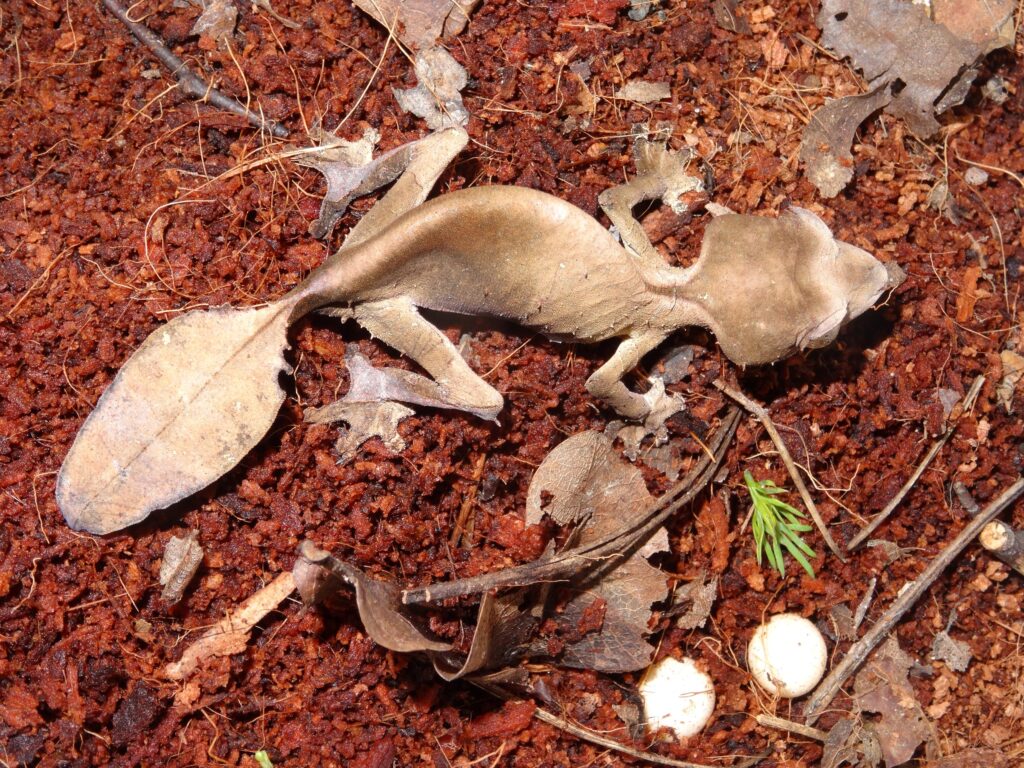
BION Terrarium Center
BION Terrarium Center was established in 1993 as a reptile import and export facility. It was restructured in 2010 to focus entirely on the captive breeding of reptiles and amphibians. The facility breeds a total of 50 species, many of which are threatened in the wild or are sought after by smugglers. BION works with several species of Madagascan reptiles and has bred nine species of Uroplatus over the last decade. Oleksii Marushchak, Head of Research and Development at BION Terrarium Center told Exotics Keeper Magazine: “All our breeding stock was legally imported from Madagascar, except for a small quantity of captive bred specimens from Czech Republic. We are now on our fifth generation of captive bred Uroplatus phantasticus. Last year we produced around 140 phantasticus and the year before that we produced around 120. In previous, peaceful years with normal controlled conditions we generally produce 100+ and this year we were hoping to produce almost 300 animals but due to the war in Ukraine, we were unable to reach that goal. Despite everything, we have still had eggs and managed to breed the species once again this year.”
Although there are a lot of people who work with satanic leaf-tailed geckos, few people breed them in substantial quantities. Many hobbyists breed them annually, but there are not enough to produce large enough numbers for them to become established in the pet trade. This makes the work that BION is doing and its associated research extra valuable.
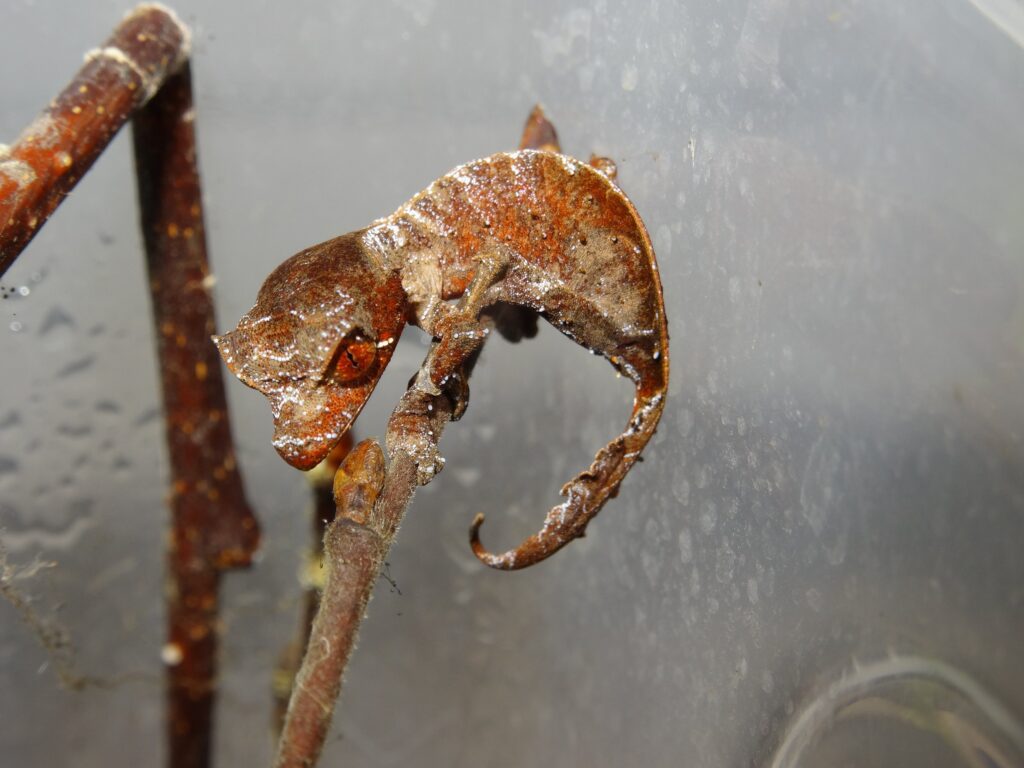
A dance with the devil
Satanic leaf-tailed geckos, despite their delicate appearance and fragile bodies are straightforward to keep. However, breeding them is a completely different story. Perfecting the formula can take many years and a lot of hours observing animals.
Oleksii explains: “They are very fragile and there are a lot of difficult moments when working with Uroplatus phantasticus. The first problem is that it is difficult to define the age of a wild-caught animal. Even a visually good-looking specimen can be incredibly old, so animals can die simply of old age. Therefore, it is always better to buy captive-bred individuals to at least get an estimate of their age.” Although Madagascar is now closed to exports, there will likely be many wild-caught leaf tailed geckos in circulation.
As well as problems in sourcing animals, hobbyists can quickly make assumptions about the species without truly looking at their needs. Even online data based on the regional temperature and climate of their distribution can be extremely misleading. “Even though many people think ‘okay they’re from Madagascar, that’s close to Africa, it must be +30C’ they don’t understand that these animals inhabit special microclimates” adds Oleksii. “They inhabit locations deep in the bush where the air temperature is no more than +25C and 27C could be dangerous to them. There is also the assumption that because they are nocturnal animals, they don’t require ultraviolet. This is absolutely not true. We use tubes where UV is about 5.0 or old tubes where UV was 10.0 but is now much less.”
Satanic leaf-tailed geckos are not difficult to keep because they thrive at a typical “room temperature.” If they are given the right diet, enough UVB and appropriate décor to allow them to choose their own elevation, they are simple to keep. The major problem is maintaining the conditions within the home. Unexpected temperature spikes can cause serious problems. For example, when the UK has sudden temperature spikes throughout summer, this can seriously tip the environmental conditions in the terrarium into potentially lethal territory. “The only thing that needs to be strictly controlled is the environment” adds Oleksii. “If someone is going out for the day for a BBQ or something, they really need to consider the climate control technology in their home or lab. If they can maintain steady temperatures, phantasticus is quite easy to keep.”
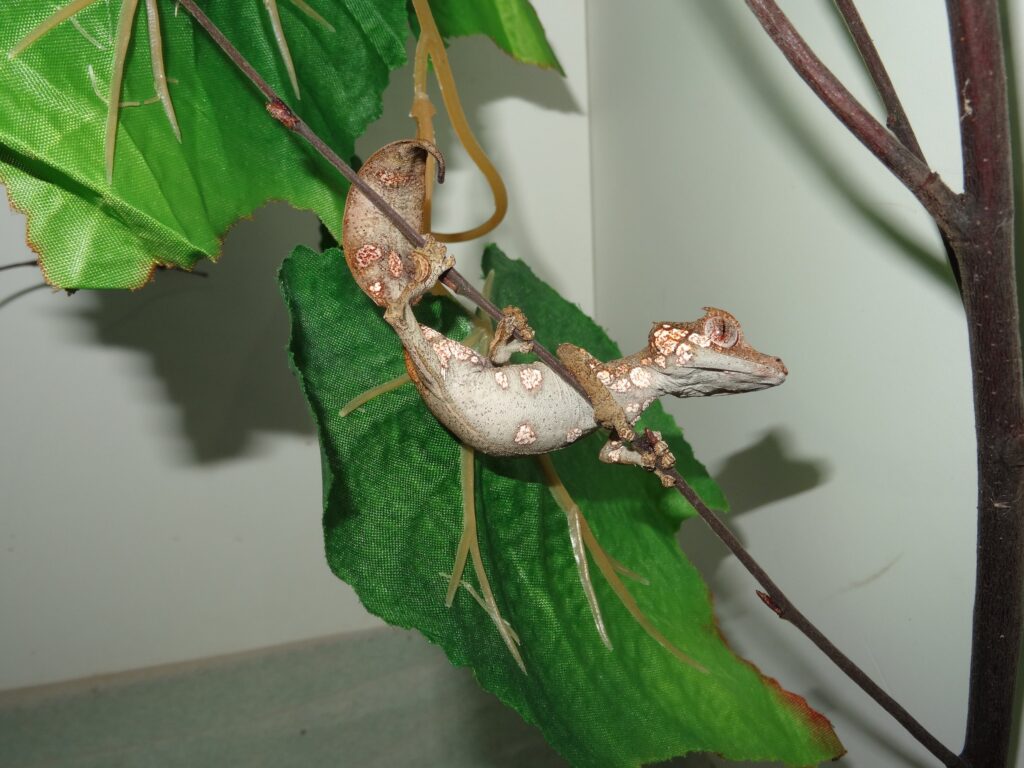
Doing the devil’s tango
There are some husbandry practices that must also be applied to the general maintenance of satanic leaf-tailed geckos if the hobbyist wishes to breed them. Some of these are quite common and follow a similar pattern to other reptiles, while others are far more specialist.
“Many people also fail by not providing a winter dormancy period” adds Oleksii. “Almost all reptiles need a period of winter dormancy, torpor, or winter rest. It is needed for proper development of spermatozoids and oesticides. If one does not provide the correct winter dormancy the breeding will fail. We drop temperatures to around 20-21°C in the day and 16-18°C at night. It is important to track the state of the animals to ensure the winter dormancy is not too long or too short.”
“For us, the hardest thing to understand was the interaction between males and females during breeding. We would add a male to a group of females and expect them to breed. We see a male copulate with one female, then the next female, then they lay eggs, the male copulates again and eventually the male would die without any reason. We developed our understanding only when COVID-19 made us quarantine in the BION facility. I and several other members of staff had to live on site, so we had a chance to track what the animals were doing when the lighting was off. We discovered that, when placed with other females, the male always wants to breed. When he is ready to copulate, he completely forgets about food and water and only has one thing on his mind – breeding. Because we keep our animals in laboratory conditions, the males always had a female in their vision. So, we made corrections to our methodology, and we no longer keep our males with our females more than three days after the female has laid the clutch, no matter whether the clutch is fertile or not.”
Finally, and perhaps the most specialist trick to ensure success when breeding Uroplatus, but especially phantasticus is to feed them lots of snails. Oleksii explains: “There are a lot of sources of calcium that can be added to a terrarium. We use supplements, powders, some with D3, some without D3, some with added nutritional elements and even cuttlefish bones. They work well but not perfectly. Whereas, if we add snails to a female’s diet, they are far more successful at breeding. We add these as soon as they awaken from winter dormancy. Here, their diet is made up of 60-80% small, soft-shelled snails. All their eggs are calcified, healthy, incubate well and hatch successfully. Plus, the babies are far healthier.”
A female can make two to five clutches per season. Some can make up to seven clutches per season. A typical clutch is made up of two eggs. BION’s hatch rate is also exceptionally good, with about 90% of eggs hatching and about 90% of these are healthy babies. “There are a lot of different incubation methods” Oleksii added. “We use “Seramis” medium as an incubation substrate. This is finely chopped egg stones that are usually used in plants. We provide them with +70% humidity. They also have a slight temperature drop. So, +24-25°C in the day and +20-21°C at night.”
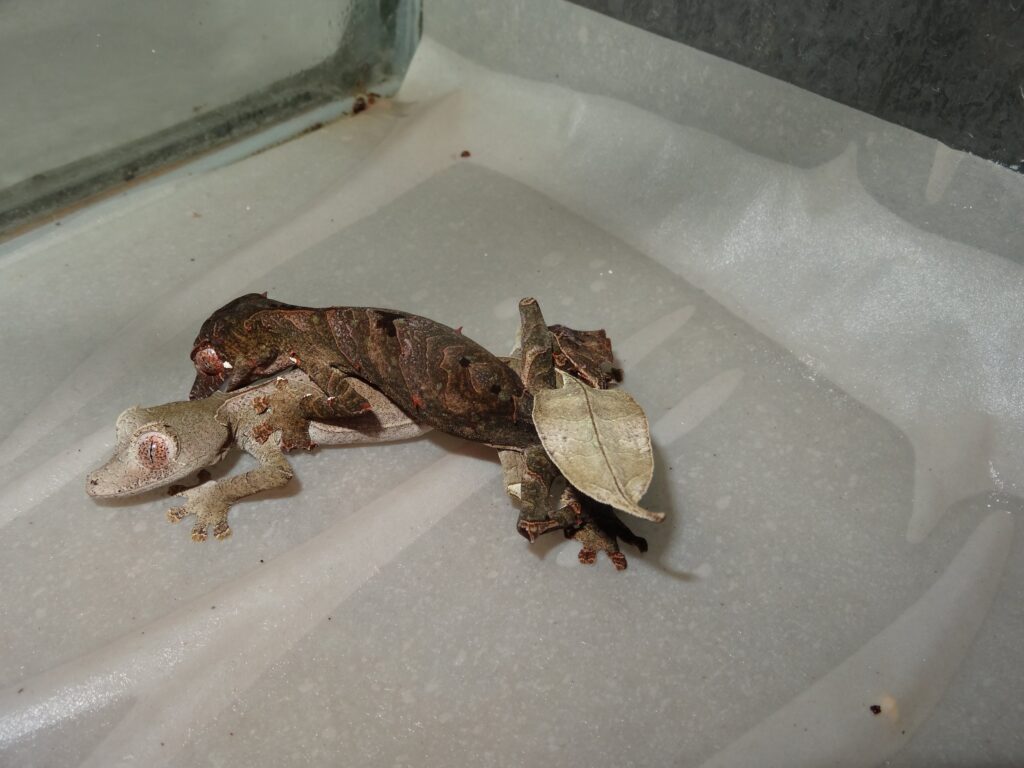
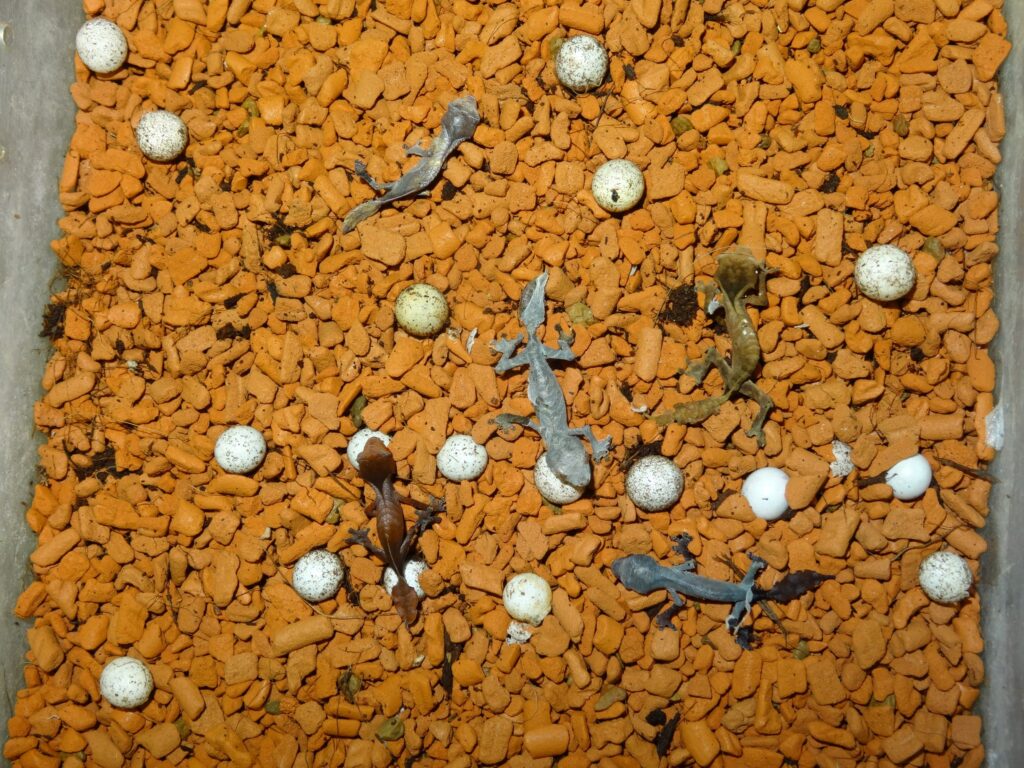
Angels and demons
The expertise of Oleksii and the rest of the team at BION is pivotal in helping herpetoculturists understand how to breed other leaf-tailed geckos. As a genus that is constantly growing, with many more species being described each year, it is important that herpetoculturists stay ahead of the curve and document their methods.
“The problems I have mentioned are more-or-less common for most Uroplatus. I would not say phantasticus are the most-difficult species to breed. In fact, for me and my research, I would say Uroplatus pietschmanni are most difficult. We understand that different species occupy different ecological niches. Some species occupy bushes, some occupy tree trunks, others occupy tree canopies. Pietschamnni are one of these species. They have better airflow so they need more air change, they are exposed to more UV, the air pressure might also be a key factor. We did breed pietschmanni but not in such large quantities. The most difficult are the newly described species because we have absolutely no resources to know how to do it.”
There is a lot of controversy around the introduction of the newly described leaf-tailed geckos in herpetoculture. This is partly because they do not have a scientifically backed conservation status and therefore cannot be accurately added to CITES. This means there are no export quotas for the species. Many of the new species also look very similar to other species. For example, Uroplatus fiera looks like a large Uroplatus ebenaui. There may be cases of hobbyists believing they have a large ebenaui but in fact, are keeping fiera. That lack of information can create complicated mistranslations of existing information. Uroplatus kelirambo also looks similar to phantasticus and therefore, distinguishing between a previously “widespread” species may be difficult.
“I have heard that there is an idea that the red-eyed animals are another form or colour variant. I think this is just a feature of their eye. We have many individuals of phantasticus and all of them, under certain light, turn red. When we switch off the light, the next day they return to a light brown or yellow iris. I don’t think the red-eyed animals are a particular morph, I think it is just a peculiarity of their eye structure. I have never seen an individual that has red eyes all the time.”
Hell on earth
Slash-and-burn-farming is a major threat to all Madagascan animals that occupy rainforests and leaf-tailed geckos are no exception. The forest is burned to produce tree coal and later to be adapted into rice fields and vanilla, ginger, or tea farms. This indiscriminate disaster is happening across the island and unfortunately affecting a wide range of species. Of the entire Uroplatus genus, over 30% have only been described in the last decade including one in 2020 and two in 2019. Sadly, entire species could be lost to slash-and-burn farming before they are even described to science.
Global warming is also extremely dangerous for satanic leaf-tailed geckos. They are a fragile species and if the temperature increases by just a few degrees, it will spoil their winter dormancy period, their incubation period and limits their options when finding cooler microclimates within the forest. This may leave them exposed to introduced predators such as domesticated cats, dogs or rats. “Uncontrolled harvesting and smuggling can also have an impact on their populations in the wild” adds Oleksii. “This is why herpetoculture matters. It means we can produce animals from legally obtained breeding stock. We make them affordable and offer them in large quantities within the market and therefore, we are happy, the people are happy, and the smugglers don’t receive their money.”
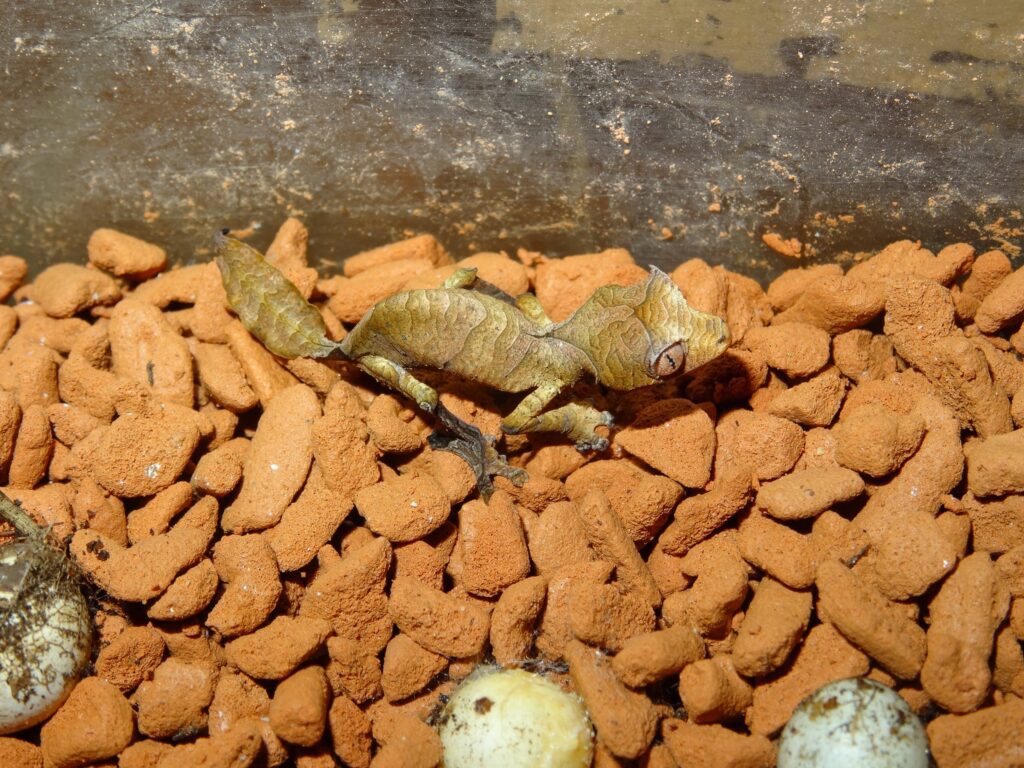
The Responsible Herpetoculture Foundation
As well as breeding thousands of animals each year in a bid to protect wild populations from illegal harvesting, BION Terrarium Center together with Philippe de Vosjoli has also established the Responsible Herpetoculture Project (RHP). “I probably uncovered all the secrets for breeding phantasticus there! We might have to stop the programme now!” joked Oleksii. “But seriously, all the information we give is our contribution to herpetoculture. If we die one day, it will be a big loss of experience if nobody has access to it. That is why we publish methodology, write articles, and do interviews.”
As well as sharing their own information, the team at BION have also produced the Responsible Herpetoculture Journal as part of the RHP. Subscribers and supporters of the RHP are given access to this monthly journal that centralises information and publishes the articles of herpetoculturists in a way that is easy to both produce and consume. “Many hobbyists have more valuable information than scientists have” Oleksii added. “I am a scientist myself and I know that not all scientists can afford to keep lots of valuable and expensive animals in their labs. The main goal of RHP is to share this information amongst as big audience as possible.”
Dmitry Tkachev, Director of BION Terrarium Center and Founder of the RHP added: “The main role of RHP is to become a public relations and educational platform that will protect the interests of herpetoculture both as a hobby and industry. For example, USARK does it in terms of legislation, while RHP would do through ideology, methodology and education. At the same time, RHP policy is to promote active cooperation with and mutual assistance to all partner organizations (USARK, DGHT, TTCG, Citizen Conservation, etc.) We are not going to be the ultimate truth; we appreciate the role and importance of all of these and other stakeholders.”
The Responsible Herpetoculture Project encourages and supports all private breeders who contribute to forming, maintaining and increasing ex-situ populations using only responsible and legal approaches to obtaining, moving and keeping animals as well as supporting the unconditional right of responsible breeders to sell captive-bred species. RHP’s goal is to raise the authority and status of herpetoculture in global conservation community and to become an informative, educational and public platform for all involved and interested parties. “The ethics of selling captive-bred animals to reduce over-harvesting worldwide seems to be clear and logical” adds Dmitry.
Philippe de Vosjoli adds: “We feel the relevance of this project and the opportunity to bring it to life. We have a team of like-minded people who work on the project on a regular basis and we call on all those who are not indifferent to the fate of herpetoculture as a hobby and business to join RHP! We are genuinely interested in representing active people from the private sector, the reptile industry, zoos and conservation!”
Herpetoculture is a complicated field with lots of interesting aspects. Although there will always be controversy around human’s relationship with animals, the hobby that promotes their responsible keeping of exotic pets is linked to conservation in a way that conventional pet keeping never will be. Not only is herpetoculture a discipline in and of itself, but the breeding of unique and cryptic species is also a vessel for education and a tool to improve scientific understanding.
For more information visit https://responsibleherpetoculture.foundation/